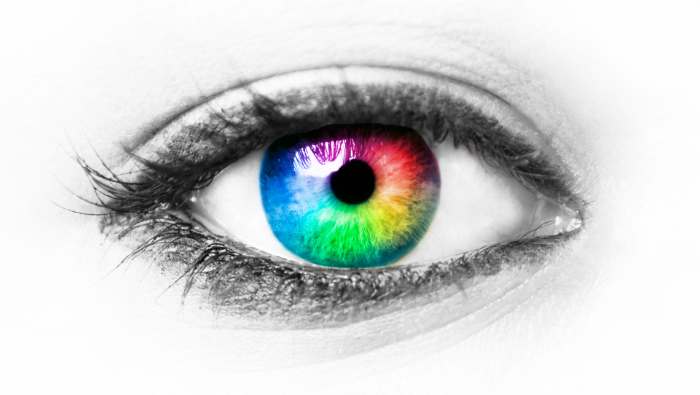Can Early Signs of Alzheimer’s Disease Be Seen in the Eyes?
Alzheimer’s is a progressive neurological disorder affecting memory, behavior, and cognition.
The condition usually manifests in individuals over 65, but it can occur earlier in some cases.
As the disease progresses, it becomes increasingly challenging to manage symptoms, making early detection critical.
Studies have shown that the eye may provide essential clues about the onset of Alzheimer’s disease.
This article will discuss the early signs of Alzheimer’s disease in the eye and how they can be detected.
Alzheimer’s disease is a devastating condition that affects millions of people worldwide.
The disease is characterized by the accumulation of beta-amyloid plaques and tau protein tangles in the brain, eventually leading to brain cell death.
This, in turn, causes cognitive decline, memory loss, and other symptoms associated with the condition.
Recent research has shown that the eye may provide valuable insights into the onset of Alzheimer’s disease.
This article will explore the early signs of Alzheimer’s disease in the eye and how they can be detected.
What is Alzheimer’s Disease?
Alzheimer’s is a progressive neurological disorder affecting memory, behavior, and cognition.
The disease is the most common cause of dementia and usually manifests in individuals over 65.
However, some cases of early-onset Alzheimer’s disease can occur in individuals in their 40s and 50s.
The exact cause of Alzheimer’s disease is unknown, but genetic and environmental factors are thought to play a role.
There is currently no cure for the disease, and treatment options are limited to managing symptoms.
Early Signs of Alzheimer’s Disease
Alzheimer’s disease can manifest in various ways, but some early signs are common in most cases.
These early signs can be classified into four categories: cognitive decline, memory loss, behavioral changes, and vision and eye problems.
Cognitive Decline
Cognitive decline is a common early sign of Alzheimer’s disease.
This can manifest as needing help with problem-solving, planning, and decision-making.
Individuals with cognitive decline may also experience difficulty completing familiar tasks or understanding new information.
Memory Loss
Memory loss is another common early sign of Alzheimer’s disease.
Individuals may need help remembering important dates, events, or information.
They may forget conversations, misplace objects, or have difficulty recalling recent events.
Behavioral Changes
Behavioral changes are another common early sign of Alzheimer’s disease.
Individuals may experience mood swings, personality changes, or become more apathetic.
They may also withdraw from social activities or lose interest in hobbies they previously enjoyed.
Vision and Eye Problems
Vision and eye problems are emerging as early signs of Alzheimer’s disease.
Studies have shown that the eye may provide valuable clues about the onset of the disease.
The Connection Between Alzheimer’s and the Eye
The connection between Alzheimer’s disease and the eye lies in the retina.
The retina is the light-sensitive layer at the back of the eye that converts light into electrical signals sent to the brain.
Recent research has shown that the retina changes in individuals with Alzheimer’s.
Ocular Changes in Alzheimer’s Disease
Retinal Thinning
Studies have shown that individuals with Alzheimer’s have thinner retinas than those without the disease.
Retinal thinning occurs due to the degeneration of retinal nerve cells, a characteristic of Alzheimer’s disease.
Reduced Contrast Sensitivity
Contrast sensitivity refers to distinguishing between shades of light and dark.
Reduced contrast sensitivity has been observed in individuals with Alzheimer’s, indicating that the disease affects visual processing.
Eye Movements
Alzheimer’s disease can also affect eye movements. Individuals with the condition may experience difficulty with eye tracking, which can affect their ability to read or follow moving objects.
Early Detection of Alzheimer’s Disease Using Eye Tests
Recent studies have shown that eye tests can help detect early signs of Alzheimer’s disease.
The following eye tests may be helpful:
Optical Coherence Tomography (OCT)
Optical coherence tomography is a non-invasive imaging technique that can measure retinal thickness. OCT helps detect early signs of Alzheimer’s disease.
Fundus Photography
Fundus photography involves taking pictures of the retina using a special camera.
The images can be used to detect changes in the retina that are associated with Alzheimer’s disease.
Contrast Sensitivity Testing
Contrast sensitivity testing can measure an individual’s ability to differentiate between light and dark shades.
Reduced contrast sensitivity can be an early sign of Alzheimer’s disease.
Other Tests for Early Detection of Alzheimer’s Disease
In addition to eye tests, other tests can detect early signs of Alzheimer’s disease.
These include:
Cognitive Testing
Cognitive testing can assess an individual’s memory, problem-solving, and decision-making abilities.
Changes in these abilities can be early signs of Alzheimer’s disease.
Brain Imaging
Brain imaging techniques, such as magnetic resonance imaging (MRI) and positron emission tomography (PET), can be used to detect brain changes associated with Alzheimer’s disease.
Conclusion
Alzheimer’s disease is a devastating condition that affects millions of people worldwide.
Early detection is critical for managing symptoms and improving outcomes.
Recent research has shown that the eye may provide valuable clues about the onset of Alzheimer’s disease.
Eye tests, such as OCT and fundus photography, can help detect early signs of the disease.
Other tests, such as cognitive testing and brain imaging, can also see early signs of the disease.
FAQs
Can Alzheimer’s disease be cured?
Currently, there is no cure for Alzheimer’s disease, but treatment options are available to manage symptoms.
What is retinal thinning?
Retinal thinning refers to the degeneration of retinal nerve cells, which can occur in individuals with Alzheimer’s.
What is contrast sensitivity testing?
Contrast sensitivity testing is a test that measures an individual’s ability to differentiate between shades of light and dark.
What is cognitive testing?
Cognitive testing is a test that assesses an individual’s memory, problem-solving, and decision-making abilities.
How is Alzheimer’s disease diagnosed?
Alzheimer’s disease is diagnosed based on medical history, physical examination, and cognitive and neurological tests. Brain imaging techniques can also be used to aid in diagnosis.
You may also enjoy…
Can Exposure to Other People’s Sweat Help Reduce Social Anxiety?








